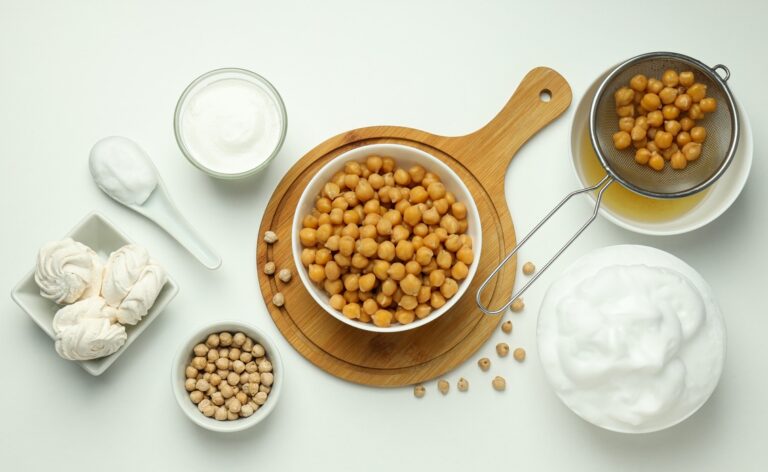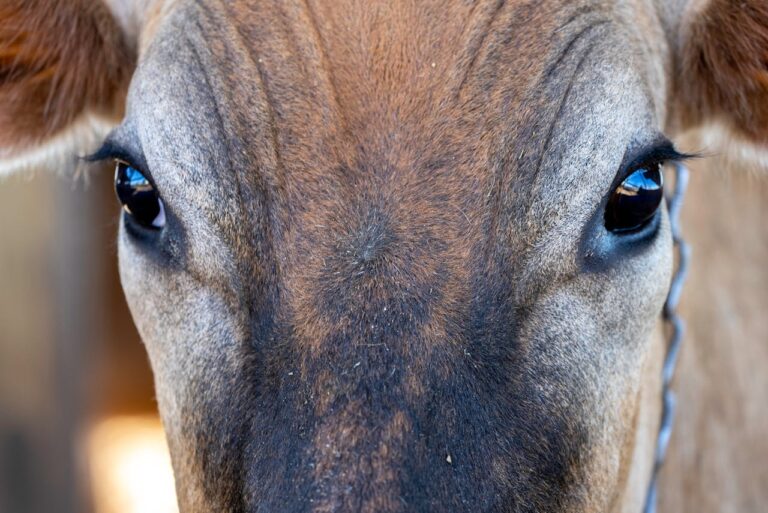Editor’s Note:
As creators ourselves of an early vegan publication that shared information about including garlic in food for dogs and cats, we’re well aware of how public understanding of this topic has evolved in recent decades. Back when The Cookbook for People Who Love Animals was released, we had received advice from multiple vets that garlic was a healthy addition for both dogs and cats. The same recommendation was made in many early publications, such as those outlining remedies for natural flea control.
Thankfully, with the widespread use of the internet, it’s now much easier for animal caregivers to learn the facts about this topic, especially as the veterinary community has since become much more clear about the safest approach to avoid any possible harm: no garlic, no onions, no leeks for either dogs or cats.
Introduction
Onions and garlic are kitchen staples, but for those caring for nonhuman animals, they pose a serious question: Are they dangerous for dogs and cats? While most veterinarians warn against feeding them, some alternative sources claim small amounts—especially garlic—can be beneficial. Let’s break down both sides, examine the science, and help you make an informed decision.
The Veterinary Consensus: Onions & Garlic Are Toxic
Why Are They Considered Dangerous?
Onions, garlic, leeks, and chives belong to the Allium family, which contains compounds (thiosulfates and N-propyl disulfide) that can damage red blood cells, leading to hemolytic anemia. Symptoms include:
- Weakness, lethargy
- Pale or yellow gums
- Rapid breathing
- Dark urine (from red blood cell destruction)
Hemolytic anemia can cause organ failure as destruction of red blood cells starves tissues of oxygen. This can lead to kidney injury from filtering cellular debris, as well as liver stress, and potential heart or lung failure due to oxygen deprivation. Cats are especially vulnerable due to their size and metabolism. Even small, repeated exposures can be dangerous, and delayed treatment is a risk for irreversible organ damage. Symptoms like pale gums, dark urine, or collapse signal emergencies, and immediate veterinary care is critical.
Toxicity Levels
- Dogs: ~5g of onion per kg of body weight can be toxic (~1 small onion for a 20lb dog).
- Garlic: More potent—about 1g per kg can cause harm (~1 clove for a 20lb dog).
- Cats: Even smaller amounts are dangerous due to their sensitive metabolism.
What The Organizations Say
- ASPCA Poison Control: Lists alliums as toxic to both dogs and cats.
- Pet Poison Helpline: Warns against all forms (raw, cooked, powdered).
- FDA: Advises against garlic and onions in pet food.
The Controversial Side: Is Garlic Ever Safe?
Despite these strong warnings, some holistic veterinarians and animal wellness advocates argue that controlled doses of garlic—including aged garlic extracts (believed to be less potent) and raw cloves may offer benefits including flea prevention and immune or antimicrobial support (from the compound allicin.)
Why These Claims Are Controversial
- Real-World Risks: Poison control cases have involved owners following these guidelines.
- No Reputable Studies: Peer-reviewed research doesn’t support “safe” doses.
- Breed Sensitivities: Cats and certain dog breeds are at higher risk.
Navigating the Debate
1. Mainstream Veterinary Advice: Avoid Them Altogether
The majority of veterinarians and toxicologists emphasize:- No amount of onion is safe for cats or dogs.
- Garlic’s supposed benefits are unproven, and are outweighed by the risks, especially for cats.
2. If Considering Garlic (For Dogs Only)
- Consult an integrative veterinarian—never self-dose based on online advice.
- Never use garlic for cats, small dogs, or susceptible breeds.
- Monitor for symptoms (lethargy, pale gums) and seek immediate vet care if they appear.
The Bottom Line: When in Doubt, Leave it Out
While alternative perspectives exist, the science-backed consensus prioritizes caution. When in doubt, skip the garlic and onions—an animal’s health isn’t worth the gamble.
To ensure your beloved companion’s safety, keep all Allium products, including fresh, dried, powdered, and cooked forms, out of their reach. Always be cautious when sharing human food, as many dishes are seasoned with these common ingredients.
Recognizing the Symptoms of Toxicity
The insidious thing about Allium toxicity is that symptoms can be delayed, sometimes appearing anywhere from 1 to 5 days after ingestion. This delay can make it harder to connect the symptoms to what was ingested.
Watch out for these signs:
- Gastrointestinal Upset: Vomiting, diarrhea, abdominal pain, loss of appetite.
- Lethargy and Weakness: They may seem unusually tired, less active, or unwilling to play.
- Pale Gums: A key sign of anemia, indicating a lack of healthy red blood cells.
- Increased Heart Rate (Tachycardia): The heart tries to compensate for reduced oxygen-carrying capacity.
- Increased Respiratory Rate (Tachypnea): They may be panting or breathing rapidly, even at rest.
- Discolored Urine: Reddish or brownish urine can indicate the presence of damaged red blood cells.
- Collapse: In severe cases, an animal may collapse due to extreme weakness and lack of oxygen.
Need More Info?
- ASPCA Poison Control: www.aspca.org/pet-care/animal-poison-control
- Pet Poison Helpline: www.petpoisonhelpline.com













